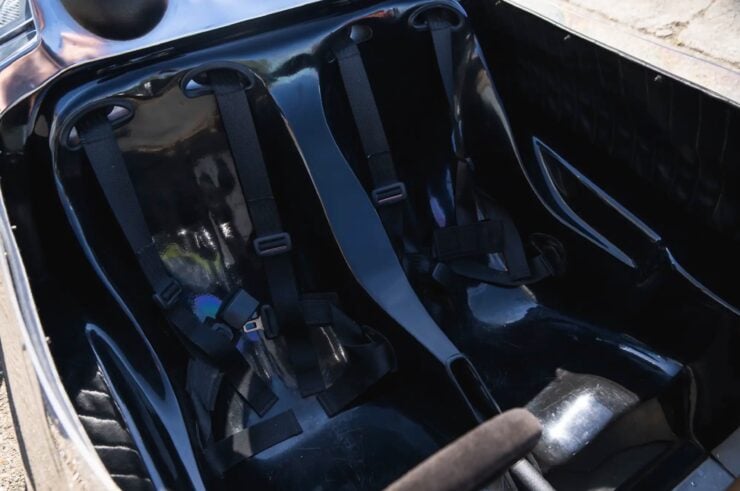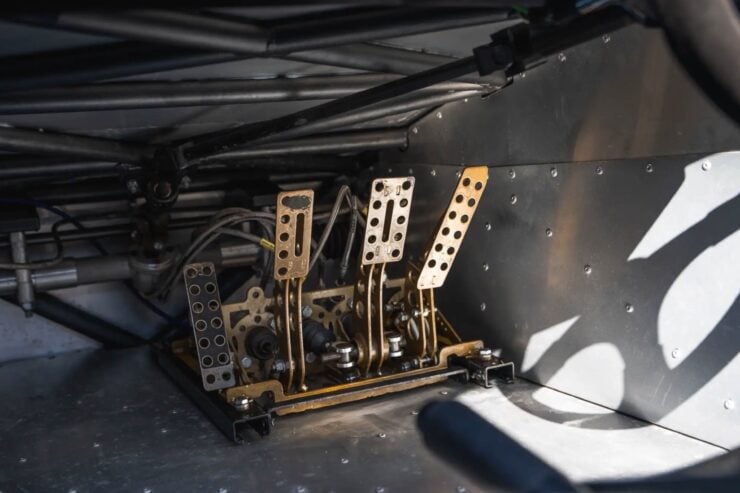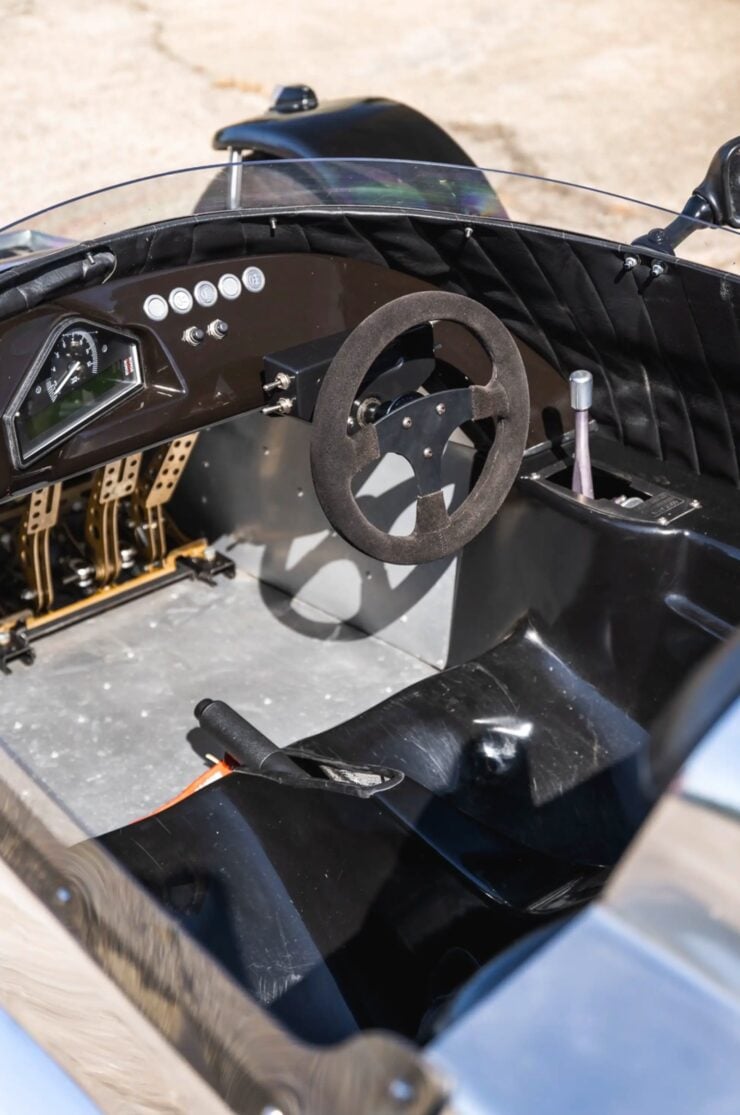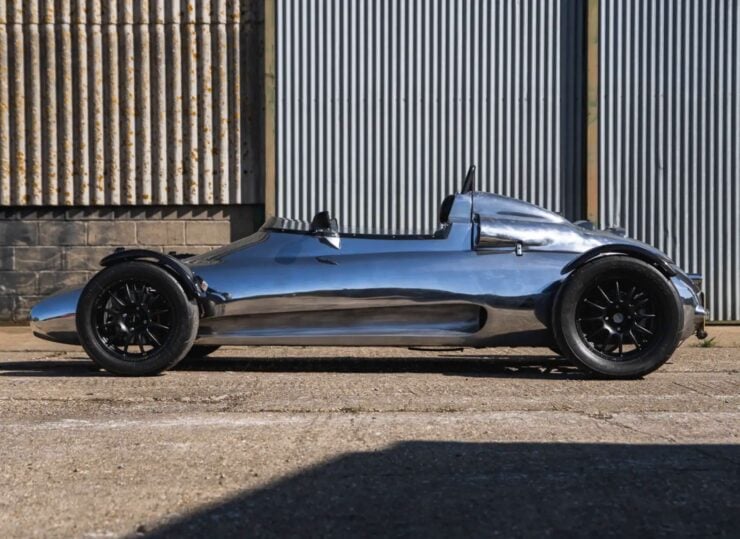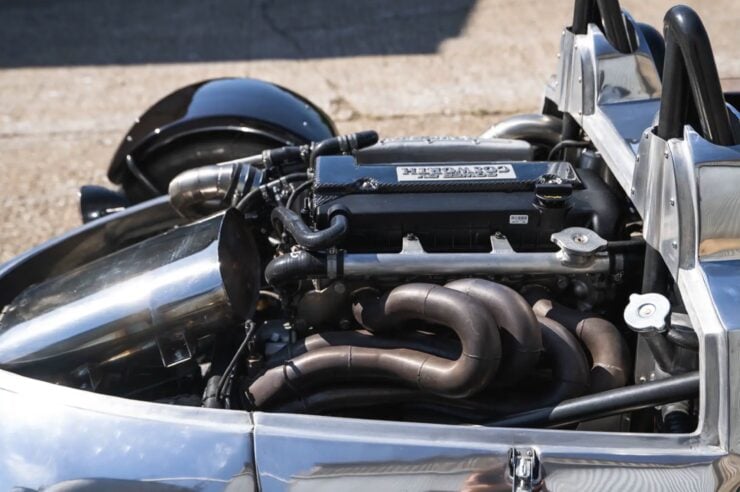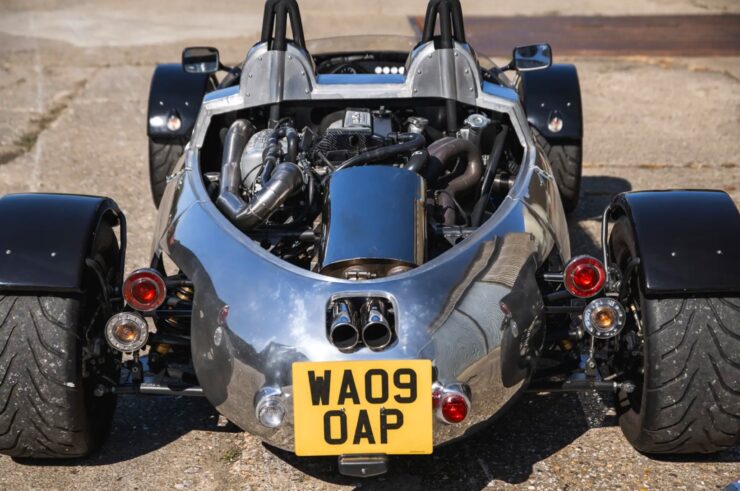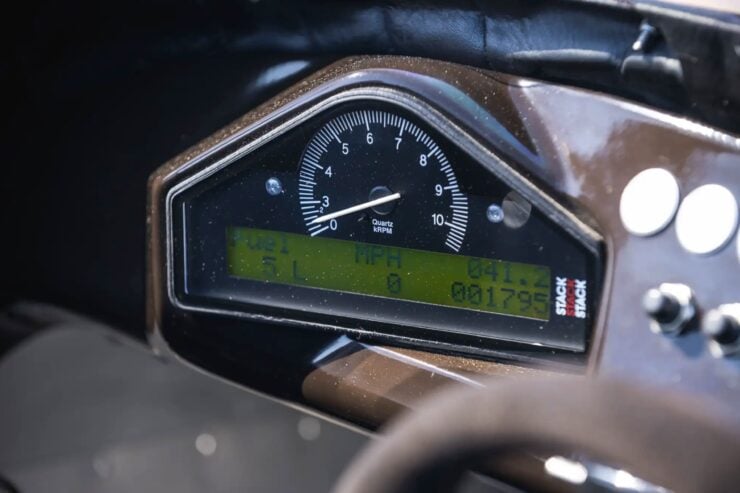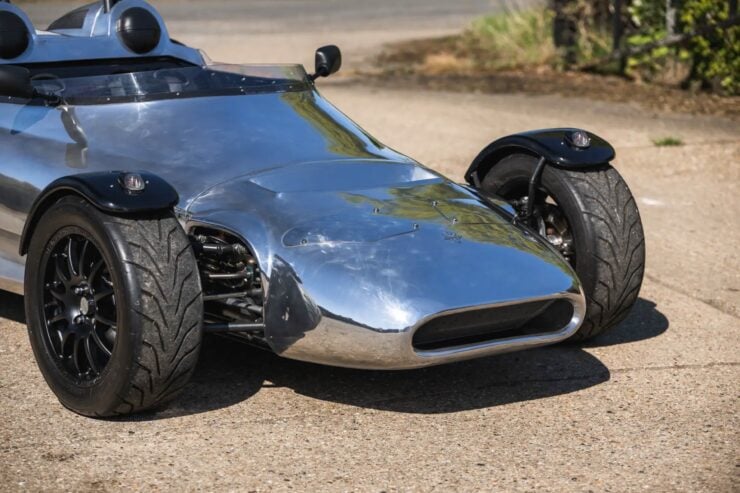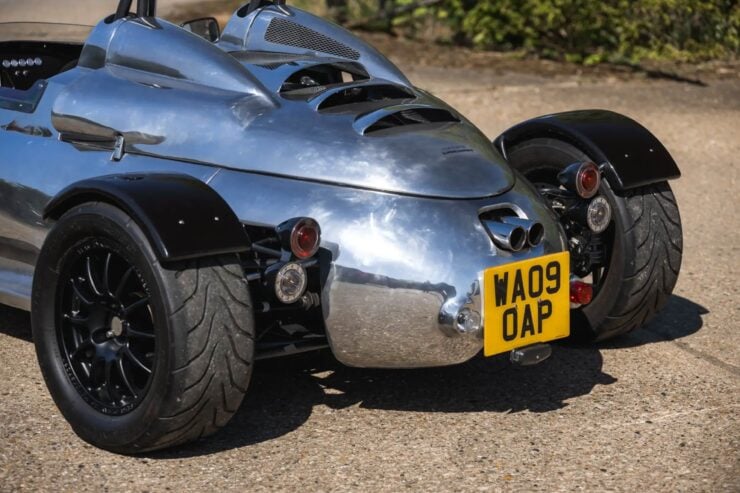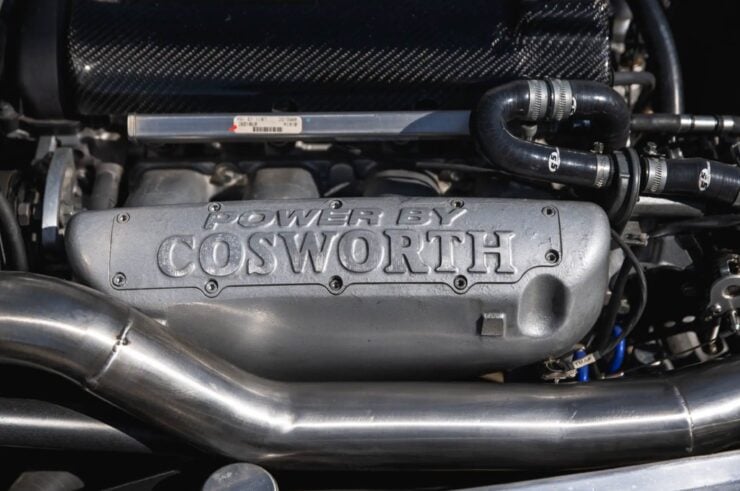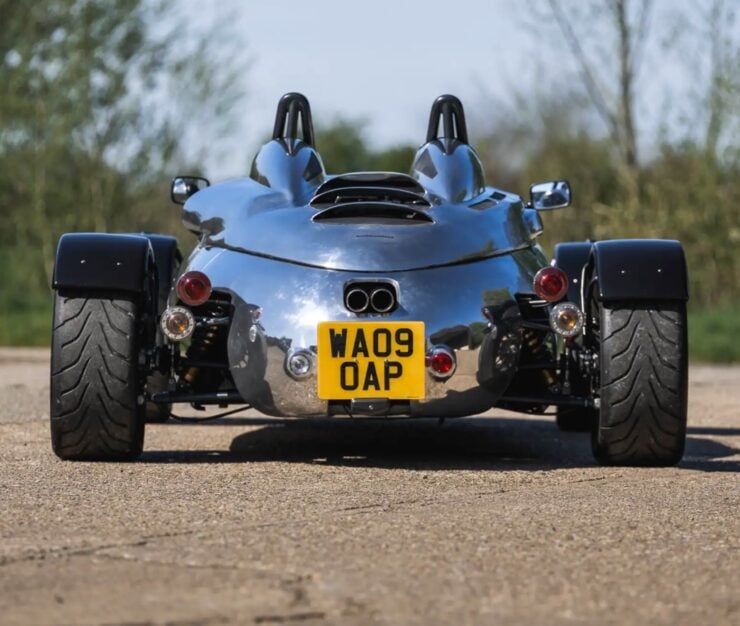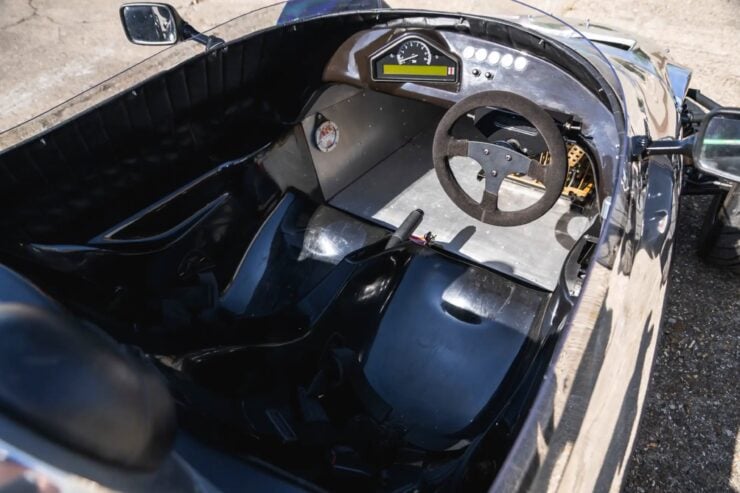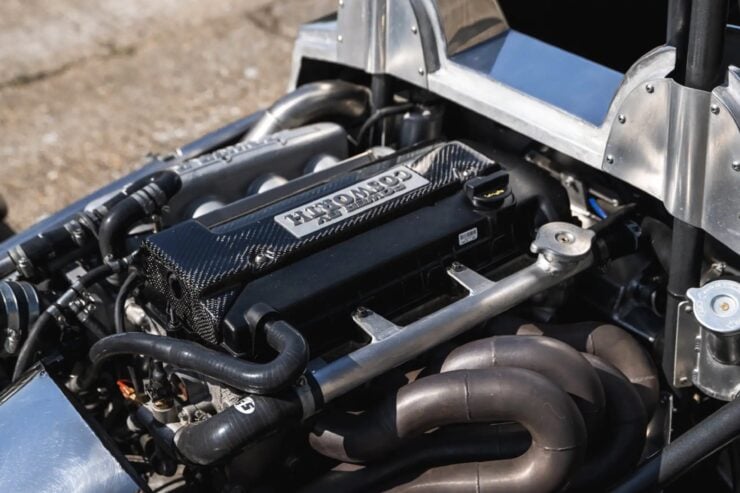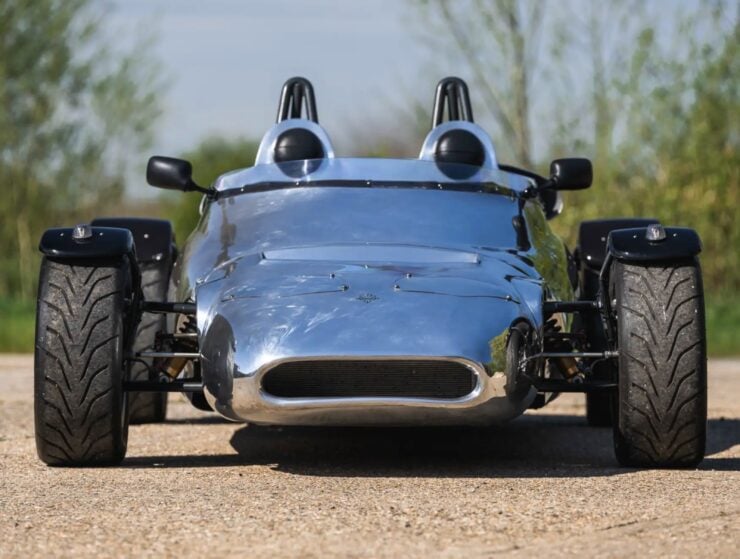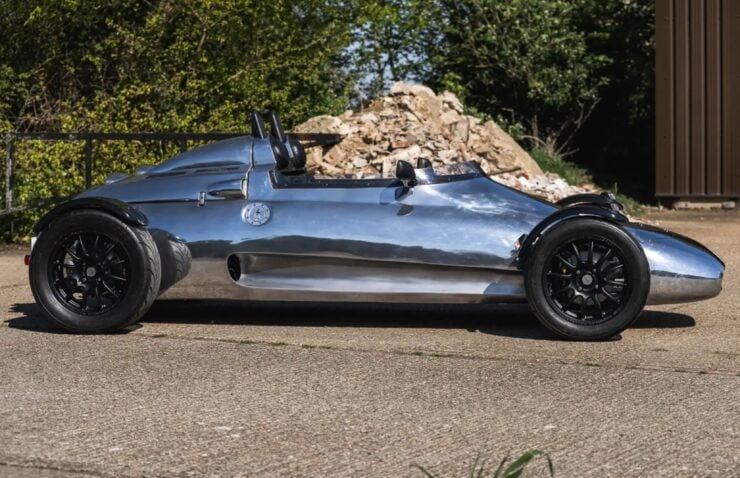This is a rare Brooke Double R Cosworth Supercharged 400, in fact it’s the only one of its kind, thanks to that hand-formed aluminum body rather than the fiberglass used on the other production cars.
The Brooke Double R was developed in the 1990s, it’s very much in the same vein as the earlier Lotus/Caterham 7 and the later Ariel Atom. The Double R has a tubular spaceframe chassis, a lightweight body, seating for two abreast, a mid-mounted engine, and a low curb weight – typically around 510 kgs or 1,124 lbs.
Fast Facts – The Brooke Double R
- The Brooke Double R is an ultra-light, mid-engined British sports car introduced in 2006, evolving from the earlier Brooke Kensington ME190 of the 1990s. It has a tubular spaceframe chassis, side-by-side seating, and a curb weight of only 510 kgs. Only 15 units were produced before the company folded.
- Its performance variants were powered by Cosworth-tuned Ford Duratec inline-four engines, with power output ranging from 200 to 400 bhp. The supercharged 400 version delivers 0-60 mph in under 3 seconds, positioning it as a rival to extreme lightweight cars like the Ariel Atom and Lotus 7.
- The car in this article is the sole Brooke Double R with a hand-formed aluminum body – all the others used fiberglass. It was built as a showcase vehicle, has covered just 1,369 miles, and was stored for 12 years in a protective car bubble. It is UK road legal and in collector-grade condition.
- Unique features include outboard double wishbone suspension with adjustable coilovers, LED-integrated fenders, and a right-side gear lever layout in the righthand drive cockpit. Despite its obscurity, the Double R remains a high-performance rarity with a cult following among enthusiasts.
The Brooke Double R
The Brooke Double R was born in 2006 out of the ashes of the 1990s-era Brooke Kensington ME190. The ME190 had been a groundbreaking car with some clever people behind it, but as is often the case with low-volume automakers, a lack of capital killed the project despite its clear promise.
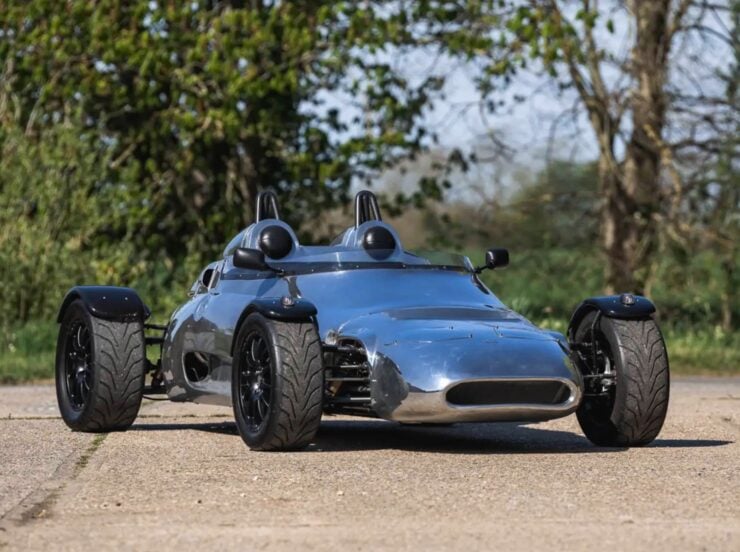

The original design of the Brooke Kensington ME190 was taken over by a new team in the early 2000s. They fundamentally re-engineered the car, and in the end the only part that was transferable between the two was the steering wheel.
It seems that one source of inspiration for the Brooke Double R might have been the earlier Light Car Company Rocket designed by Gordon Murray. The two cars do share some superficial resemblance, but the Rocket has tandem seating whereas the Double R (and the earlier Kensington ME190) have slightly more practical side-by-side seating.
The Brooke Double R: Specifications
The central structure of the Brooke Double R is its tubular steel spaceframe chassis, a stiff, lightweight structure onto which everything else is attached either directly or indirectly. The driver and passenger sit low in a cozy roofless cabin with twin aero humps over the engine bay that act as headrests above the seats.
In order to maximize cabin space, the gear lever is on the driver’s right side, an unusual choice for a righthand drive car, but it was a decision that was made as the cabin would just be too small for a central transmission-linkage tunnel between the seats.
Suspension consists of unequal length double A-arms front and back with adjustable coilovers on all four corners. The car has front and rear disc brakes, and headlights are pop-ups that remain hidden when not in use, rather than having “bug eye” style headlights like the Caterham 7 (and its Lotus forbear).
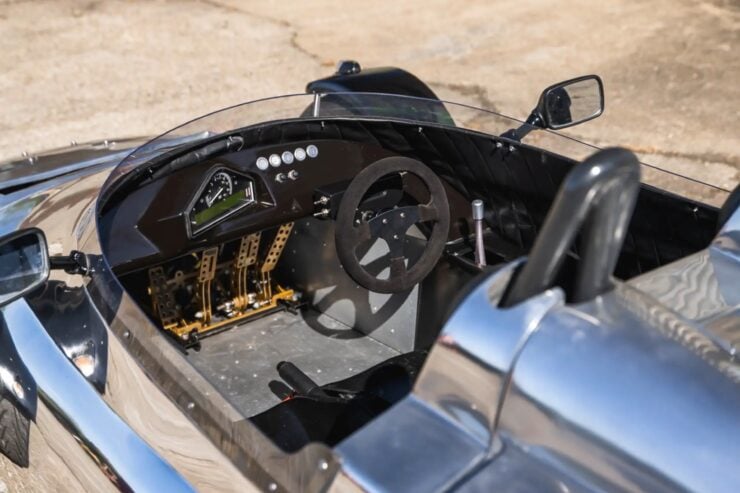


The Engine Options
The Brooke Double R was powered by a Cosworth Duratec inline four-cylinder engine, and a number of iterations were offered. These included the 200 and 260 bhp naturally-aspirated versions, and at the top of the offerings, was the 400 bhp supercharged version.
Mounted behind the driver and passenger amidships, this Cosworth engine sent power back through a 5-speed manual transmission to the rear wheels. The 400 bhp version, like the car shown in this article, is capable of doing the 0-60 mph dash in under 3.0 seconds and onto 100 mph in just 6.5 seconds – supercar humbling numbers.
Sadly, just 15 examples of the Brooke Double R would be built before the company ceased operations, and of these 15 cars just one had been built with the full alloy body, with the rest getting fiberglass. Today the Double R is largely forgotten, but the surviving cars can provide a fantastic (and unusual) alternative to a Caterham 7 or an Ariel Atom.
The Brooke Double R Shown Here
The car you see here is the only alloy-bodied Brooke Double R that was made, and it was initially used for promotional purposes and as a showcase. It has been very carefully cared for, having covered just 1,369 miles since new and having spent 12 years stored in a car bubble to protect it.
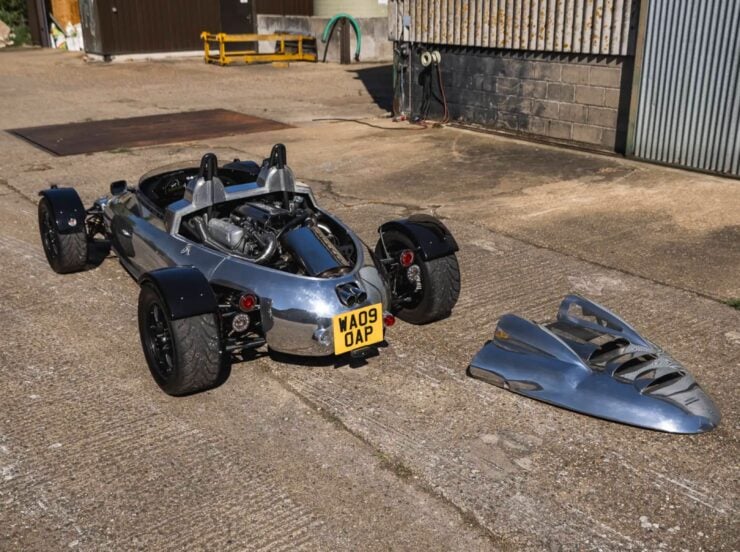


It currently belongs to just the second owner who has now decided to sell it to make some space in his collection. The car is road legal in the UK with the license plate number WA09 OAD, and it has black alloy wheels fitted with Toyo Proxes tires on all four corners.
If you’d like to read more about this unusual open-wheeled sports car or place a bid you can visit the listing on Iconic Auctioneers here.
Images courtesy of Iconic Auctioneers
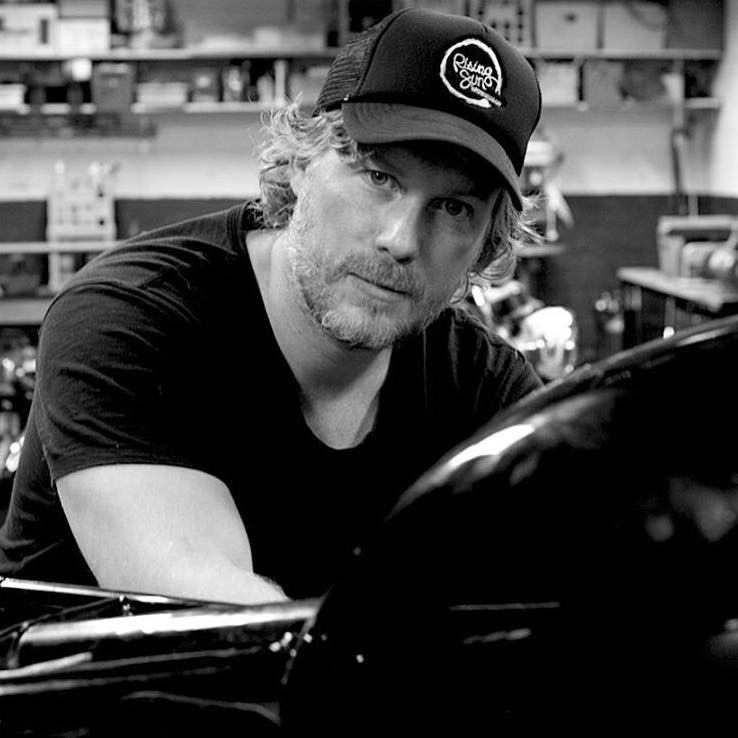

Articles that Ben has written have been covered on CNN, Popular Mechanics, Smithsonian Magazine, Road & Track Magazine, the official Pinterest blog, the official eBay Motors blog, BuzzFeed, Autoweek Magazine, Wired Magazine, Autoblog, Gear Patrol, Jalopnik, The Verge, and many more.
Silodrome was founded by Ben back in 2010, in the years since the site has grown to become a world leader in the alternative and vintage motoring sector, with well over a million monthly readers from around the world and many hundreds of thousands of followers on social media.


